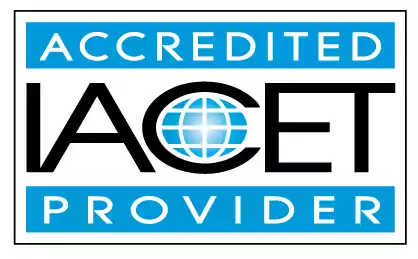Explain the importance of two-way communication.
Learn why two-way communication is crucial in early childhood education and child care centers. Discover the concept of quality in these programs and why it plays a significant role in the development of young minds.Trainings incorporating this outcome
CDA Subject Areas
Proficiency Level
120 hours courses
102 hours courses
45 hours courses
35 hours courses
32 hours courses
30 hours courses
18 hours courses
10 hours courses
5 hours courses
3 hours courses
2 hours courses
Related Outcomes
- Explain appropriate practices for the identification, prevention, and treatment of communicable diseases in childcare
- Explain ways to incorporate inclusion and equity in the classroom
- Explain the concept of quality in and the importance of early childhood programs.
- Explain the importance of providing a variety of developmentally appropriate activities, including play, to support the science skills of all children.
- Recognize the importance of maintaining confidentiality and privacy in communication with families.
- Explain the importance of using contracts and employee training & screening procedures.
- Describe the importance of responding sensitively to differences in individual communication styles.
- Describe ways to maintain communication and ensure preparedness during emergencies
- Explain the signs and ways to prevent shaken baby syndrome.
- Describe ways to communicate effectively with others.
- Recognize the importance of clear and appropriate articulation of sounds and words when communicating..
- Recognize the importance of maintaining confidentiality and privacy in communication with staff.
- Explain the importance of math instruction with young children.
- Demonstrate the importance of using various strategies to develop language and communication skills.
- Teachers will identify different ways to communicate with families
- Explain intercultural communication as it relates to coaching and mentoring.
- Describe ways to analyze classrooms for an anti-bias approach.
- Identify the importance of documenting the home visitor's work with the family.
- Explain safety management and supervision practices of school-aged children.
Related Articles
- Emotional Intelligence 101: Quirky Ways to Teach Kids Emotional Intelligence
- Easy Ways to Get Your ECE Units Online!
- The Importance of SIDS Training for Child Care Providers
- The Importance of Health and Safety Training
- Integrate Technology in a Way that Supports Learning without Overwhelming
- 10 Fun and Engaging Ways to Teach Kids About Black History Month!
- Jingle All the Way to Emotional Regulation: Teaching Kids to Manage Holiday Stress
- The Importance of Emergency and Disaster Preparedness Plans for Child Care Providers
- Crayons, Chopsticks, and Cheerios: Surprising Ways to Boost Fine Motor Skills in Kids
- Mirror Mirror on the Wall: Whimsical Ways to Prevent Bullying Tendencies in Kids, Inspired by Fairy Tales
- The Importance of Outdoor Play in Early Childhood Education
- Understanding the Importance of Child Abuse and Neglect Training
- The Importance of Trauma-Informed Care in Early Childhood Education
- Enhancing Communication with Families in Child Care: Building Strong Partnerships
- Why Finger Paint and Sand Tables Are Just as Important as Phonics: The Science Behind Messy Play
- A 9-Hour Communication Course for Childcare Professionals
- The Critical Importance of Early Childhood Education
- Enhance Your Skills with the 9-Hour Communication Course
- Little Zen Masters: Ways to Incorporate Mindfulness into Play to Help Navigate Emotions
- Celebrating Culture the Montessori Way
 12 CEUs
12 CEUs